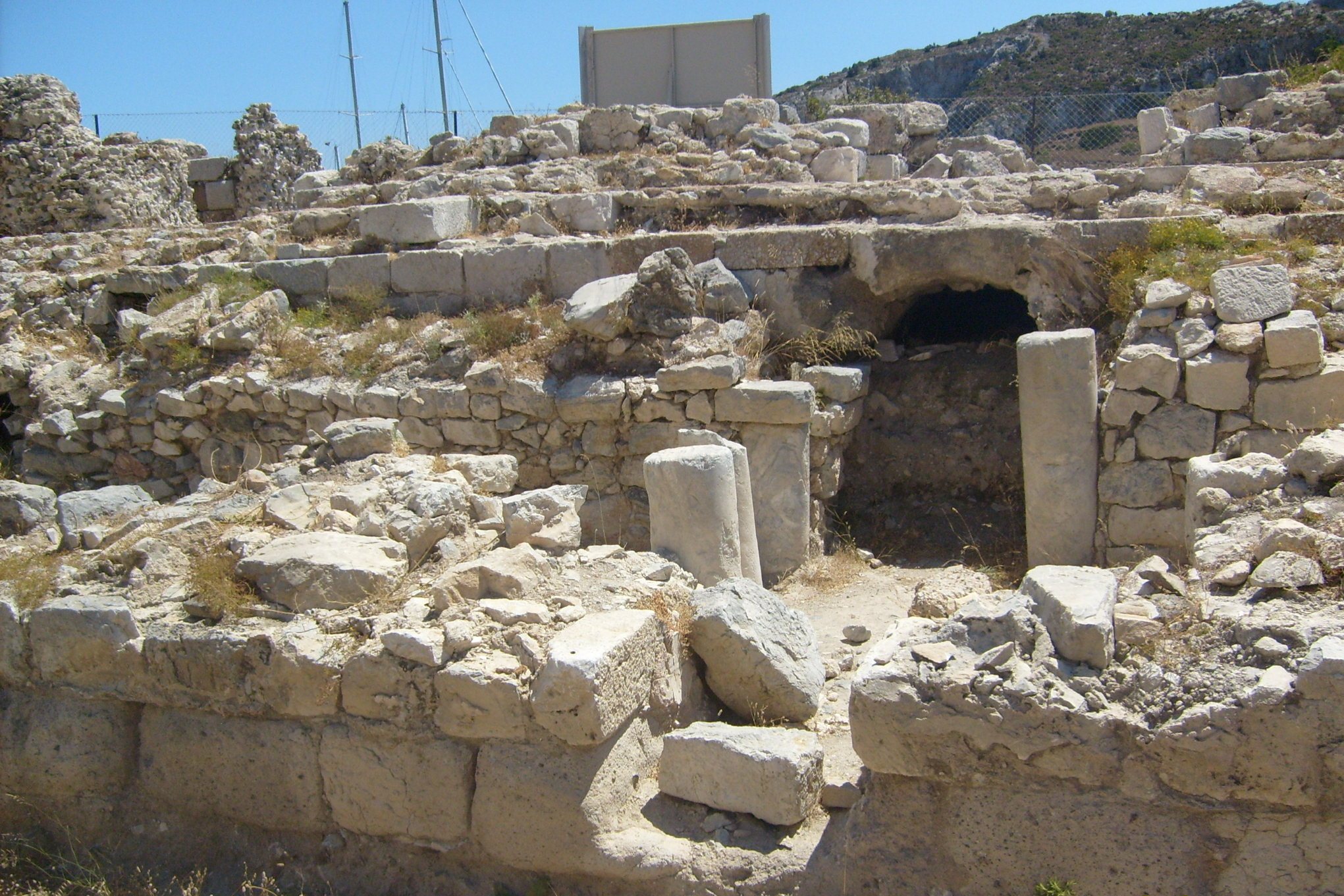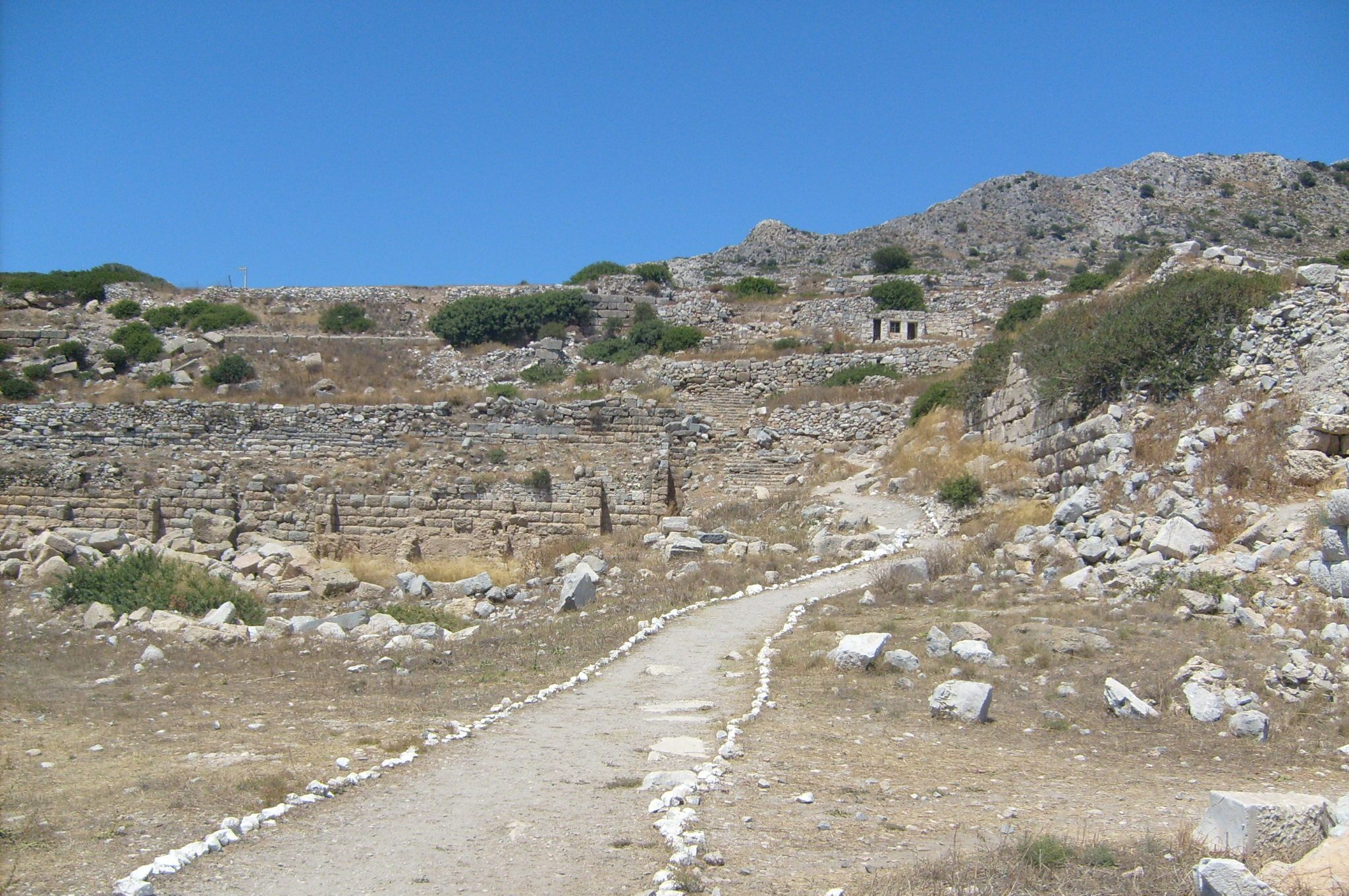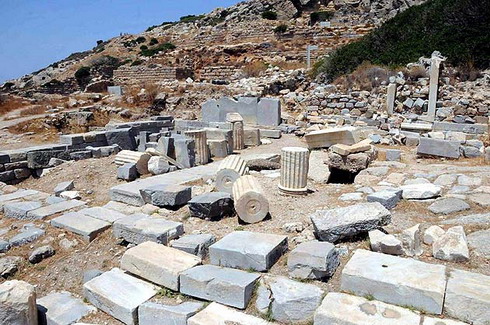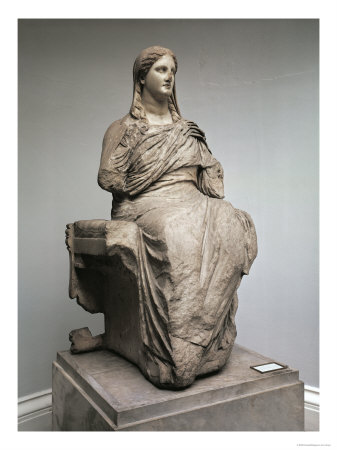The road to Knidos from YazıköyIt soon transpired that Yazıköy is really close to the tip of the nose of the Datça Peninsula - and therefore close to the Hellenistic ruins of Knidos. We were excited. The last time we were in Datça, 8 years previously, we had tried to get to Knidos, but the mountain road was a track at the time and, on that particular day, impassable. Knidos has remained on our radar ever since.
Thankfully, despite being very high and narrow in places, the road to Knidos is now tarmacked and the ruins are easily reached. It was November and we had the whole site completely to ourselves.
The ancient Greek site of KnidosTurkey is well known for its plethora of ruins spanning many significant historical periods and, to be honest, when it comes to ancient Greek and Roman sites, it's easy to become blasé about their presence. It's easy to become 'ruined-out.' But some sites are special - and Knidos is one of those sites.
We could go into detail and tell you all about how Knidos was a rich, cosmopolitan city, how famous mathematicians studied here, how a certain Sir Charles Newton helped himself to many of the site's statues and shipped them to London (you'll have to go to the British Museum if you want to see them) but you can read all that in a guidebook. And, whilst we're interested in the historical value of Knidos, it's not just the history that makes it special for us.

Normally packed with tourists, on the November day we were there, Knidos was windswept, lonely and beautiful. A place to come and sit or explore in solitude. We battled the constant wind to make it to the top of the hills and I was grateful for the focus-lock feature on my camera - it was impossible to hold my hands still to take a photo, so strong were the gusts rushing in from the open sea.

Read more: http://www.turkeysforlife.com/2011/12/datca-peninsula-knidos.html#ixzz2lmjoI5q8
















%20001.jpg)
Marble statue of Demeter 350-330 BC, found in the sanctuary of Demeter at Knidos


